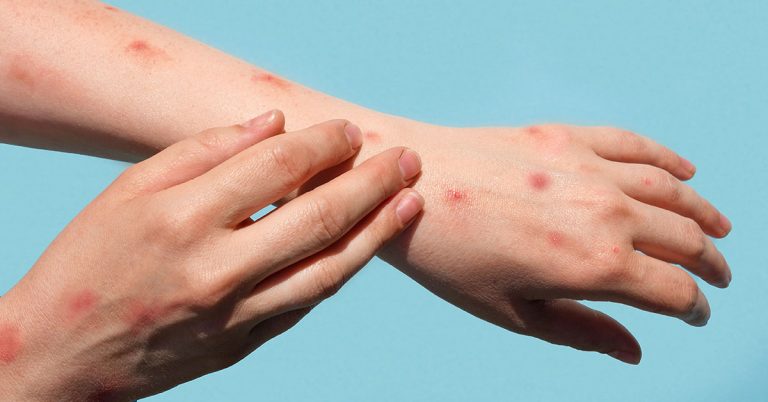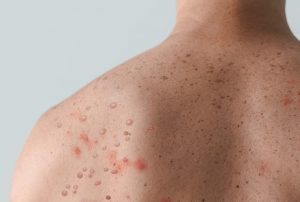
Mpox Updates
Overview
Mpox (previously named monkeypox) is caused by infection with mpox virus, a member of the genus Orthopoxvirus in the family Poxviridae. There are, currently, more than 80 poxviruses known to science and these poxviruses have been isolated from different species of birds, insects, reptiles, marsupials and mammals. Poxviruses that may cause human disease include the smallpox (or variola) virus and molluscum contagiosum virus.
Mpox has been historically reported in several countries in West and Central Africa (WCA). This distribution of mpox virus is attributed to the fact that it is naturally harboured by animals found in this part of Africa. It is believed that rodents, most likely certain species of squirrels found in the deep forested areas of this region in Africa, may be the natural host of the virus.
Mpox infections in humans have, historically, been noted in these countries, albeit at a relatively low level. However, since the 1990s, there have been more cases, and factors that have contributed to this, including the discontinuation of smallpox vaccinations, increased contact with wildlife due to population migration and deforestation, the consumption of bushmeat, and increased population densities. The Democratic Republic of Congo (DRC) has seen an increase in mpox cases between 2008 and 2018, and in 2017, the disease returned to Nigeria. According to the World Health Organization (WHO), the number of cases in areas of Central and East Africa this year [2024] is unprecedented. In mid-August, WHO and Africa CDC declared the outbreak a public health emergency of international concern (PHEIC) and public health emergency of continental security (PHECs), respectively.
Clade I, previously known as the Congo Basin clade, has two sub-clades, Ia and Ib. Clade Ib denotes the new strain of the disease discovered in September 2023 that has taken hold in the DRC and neighbouring countries. This outbreak is happening concurrently with the multi-national outbreak that started in 2022. Clade II, previously known as the West African clade, has two sub-clades, IIa and IIb. Clade IIb is the strain that caused the 2022 global outbreak and is primarily transmitted through sex. In this outbreak, the most at-risk group was identified as men who have sex with men. Vaccinations and behavioural adjustments curbed the spread of the outbreak; however, new infections are still occurring. With regards to the multi-country outbreak, South Africa reported 5 cases in 2022 and 24 cases in 2024, as of August 2024. No cases of Clade I have been detected in South Africa to date (August 2024).
The mode of transmission and the high-risk population groups distinguish the deadlier Clade I strain from Clade II. In addition to sexual contact, Clade Ia is transmitted through household contact and contact with contaminated animals. The new variant, Clade Ib, seems to spread more easily through routine close contact, as evidenced by the number of children affected by the outbreak.
Travel Advisory
When visiting the DRC or its neighboring countries (Burundi, Central African Republic, Republic of Congo, Rwanda, Uganda: 1) Avoid close contact with individuals who exhibit symptoms of mpox, such as skin lesions or genital lesions. 2) Refrain from coming into contact with wild animals, either dead or alive, such as small mammals like apes and monkeys and rodents like rats and squirrels. 3) Avoid contaminated items that were either handled by sick people (such as bedding, clothes, or items used in medical facilities) or that had come into contact with wildlife. 4) Refrain from consuming or processing wild animal meat (bushmeat) or using items made from them (creams, lotions, powders).
If you experience a new, unexplained skin rash (lesions on any part of the body), whether or not you have a fever and chills, get medical attention right away and stay away from other people. Inform the medical professional treating you where you have been for the past 21 days prior to the onset of symptoms.
Vaccines
There is currently no mpox vaccine available in South Africa. After decades of widespread concern due to a dangerous new strain of the virus (Clade I), the first 10,000 mpox vaccines are finally scheduled to arrive in Africa at the beginning of September 2024. The COVID-19 pandemic’s lessons about global healthcare disparities have not changed quickly, as evidenced by the delayed arrival of vaccines, despite being made available in more than 70 countries outside of Africa. The National Department of Health has endorsed the mpox vaccine recommendations by the National Advisory Group on Immunization (NAGI) Technical Working Group for South Africa. Men who have sex with men, healthcare professionals, and laboratory workers are risk groups for pre-exposure vaccination; sexual, household, and healthcare facility contacts will receive post-exposure vaccination. There are currently ongoing discussions about available vaccine procurement options. The WHO and its partners are assisting in creating vaccination plans for emergency situations and are in talks about clinical trials for medications and vaccines.
The Department of Health of South Africa calls for ongoing public vigilance against mpox disease. For more information on how to prevent the disease in South Africa, visit Mpox (Disease Index) – NICD.
Recent Updates
FAQ
Most frequently asked questions and answers about Mpox
In countries, where the natural animal host of the virus are found, the monkeypox virus may be spread from handling infected bush meat, an animal bite or scratch, body fluids and contaminated objects. The monkeypox virus has been found in many animal species: rope squirrels, tree squirrels, Gambian rats, striped mice, dormice and primates. Certain species of rodents are suspected of being the main disease carrier or host (reservoir host) of mpox, although this has not been proven yet.
In countries, where zoonotic transmission is not reported, persons are most likely to be exposed to mpox through contact with an individual that is already sick with mpox. Cases of mpox spreading through animals, outside of the endemic areas, are very rare, but may involve the exotic pet trade or potentially through contact with infected animal- derived materials such as skins and leather. Person-to-person transmission involves close contact with an infected person or materials that have been contaminated by an infected person.
In the context of the multi-country outbreak, a notable mode of transmission has been through sexual contact in the community of men having sex with men (MSM). A risk factor identified from early epidemiological investigations is having multiple sexual partners. It is also believed that several large social gatherings may have served as super-spreading events aiding in the international spread of the virus.
The incubation period (time from infection to symptoms) for mpox is on average 7−14 days but can range from 5−21 days. Initial symptoms include fever, headache, muscle aches, backache, chills and exhaustion.
Within 1-3 days of onset of disease, blister-like lesions will develop on the face, the extremities including soles of the feet and palms of the hands. The lesions may however occur on other parts of the body. The number of lesions will vary and lesions tend to appear similar in appearance and size (i.e. will be at the same stage of development). The lesions progresses through several stages before scabbing over and resolving. Most human cases resolve within 2-4 weeks of onset without side-effects. The case fatality rate in more recent outbreaks have been on average 1%.
There are many other causes of rash illness, many of which are fairly common, that may be managed or treated in different ways. It is important to diagnose these diseases accurately in order for appropriate management to ensue.
An infected person is contagious from the onset of the rash/lesions through the scab stage. Once all scabs have fallen off, a person is no longer contagious. It is currently not known how long viable virus may persist for example in semen.
Mpox is diagnosed by a healthcare worker in consideration of the clinical presentation of the patient. The nature of the rash would be the most telling sign.
However, the healthcare worker will consider possible exposures for the case with the consideration that the likelihood of contracting mpox is very low. Many other diseases, such as chickenpox, may cause similar rashes and are more common.
Samples can be tested at the National Institute for Communicable Diseases or private pathology services (contact your preferred service for more information) to confirm a diagnosis of mpox. For more information on laboratory testing of mpox, refer to the disease index on the website.
Treatment is supportive, as with most viral infections. Most human cases of mpox do not require any specific treatment and the disease resolves on its own. There are anti-viral drugs that a clinician may consider using for treatment of more severe cases of mpox on a case-by-case basis. One such anti-viral includes tecovirimat that is used for people with severe mpox disease or those with weakened immune systems.
Tecovirimat can reduce the amount of virus in the body and may help to treat severe mpox disease involving the eyes, mouth, throat, genitals and anus. It is currently unknown whether tecovirimat works or how well it works to treat mpox. Researchers are now testing the safety and effectiveness of tecovirimat for all people with mpox.
Mpox outbreaks can be controlled by diagnosis and laboratory confirmation of cases. This allows for contact tracing and monitoring to enable the pro-active recognition of any other linked cases of mpox. It is recommended that confirmed cases of mpox isolate to ensure that risk of transmission is minimized. Isolation may be through self-isolation at home if circumstances allow, but cases may be isolated in hospital if so required.
The World Health Organization did not recommend mass vaccination as a measure to contain the outbreak. Nonetheless, the United States and certain European nations are providing smallpox vaccination to high-risk households and identified close contacts up to 14 days after exposure and gay and bisexual men with multiple sex partners.
The implications for South Africa are that the risk of importation of mpox is a reality as lessons learnt from COVID-19 have illustrated that outbreaks in another part of the world can fast become a global concern. The WHO has not recommended any travel restrictions and are working with the affected countries to limit transmission and determine sources of exposure.
South Africa reported 5 cases in 2022 and 24 cases in 2024, as of August 2024. These cases have been associated with Clade IIb, the global outbreak strain. No cases of Clade I have been detected in South Africa to date. The mpox risk classification for South Africa is moderate.







